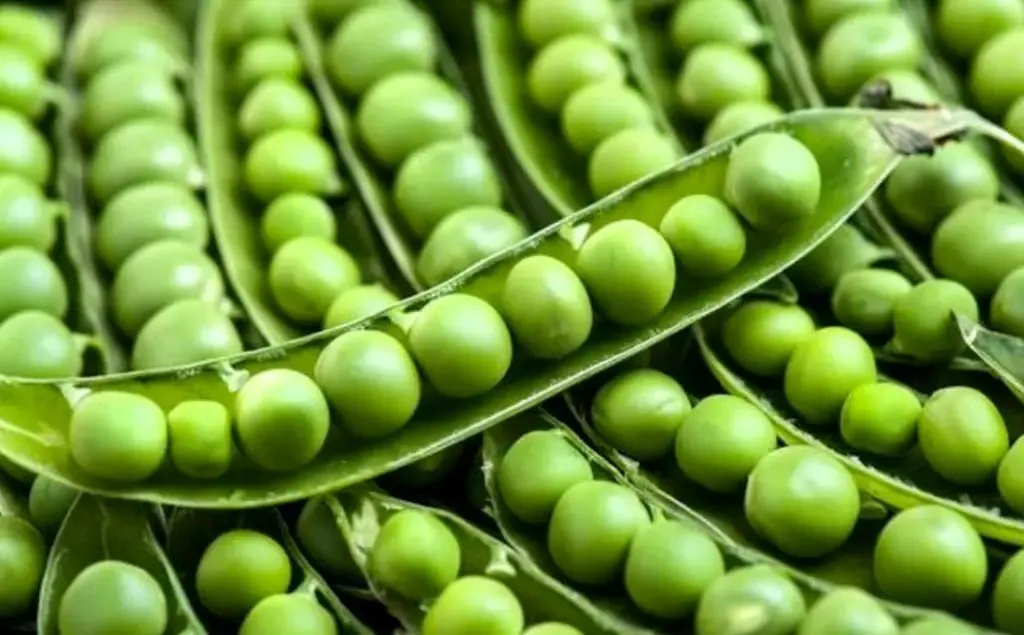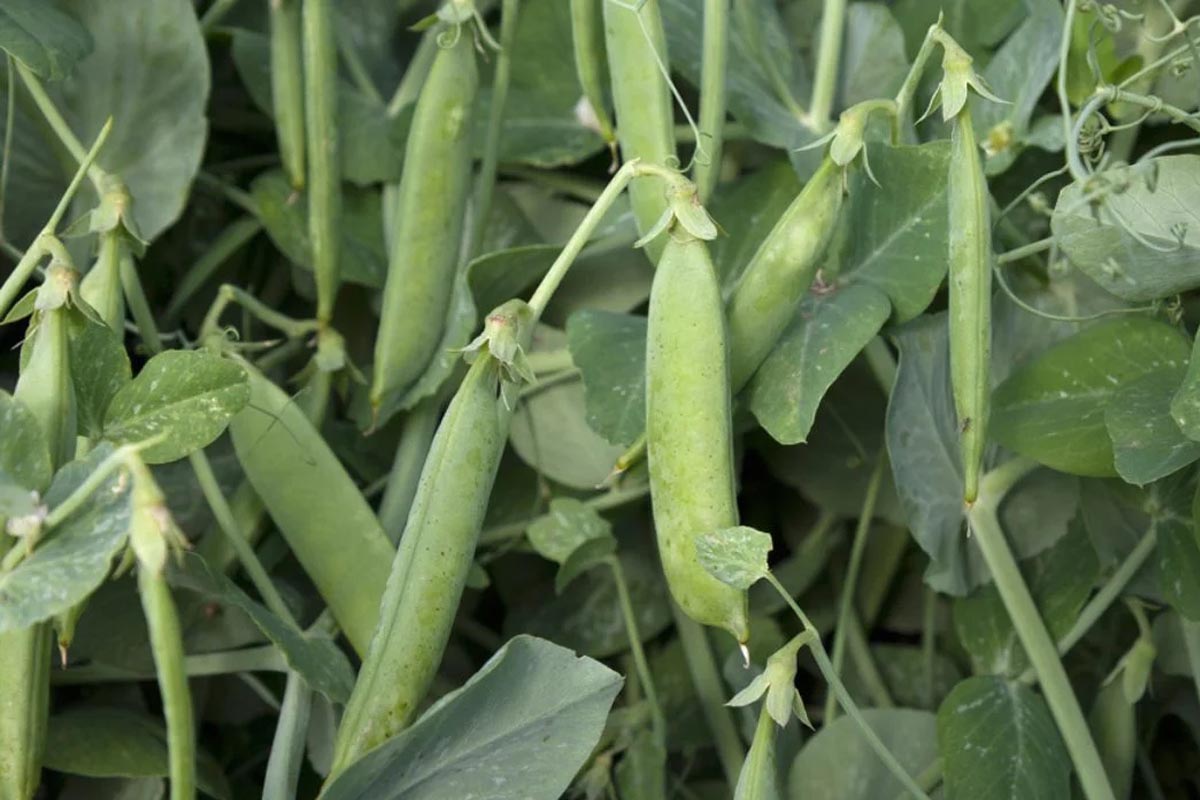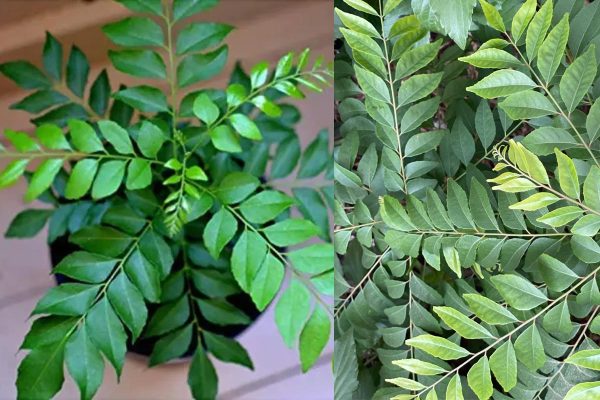Plants
Pea
Introduction / परिचय
The world of botany is a treasure trove of fascinating plant species, each with unique characteristics and contributions to the natural ecosystem. Among these remarkable plants is the humble pea (Pisum sativum), an unassuming legume that holds a special place in culinary delights and agricultural practices. From its nutrient-rich pods to its nitrogen-fixing abilities, the pea plant has captured the attention of gardeners, researchers, and food enthusiasts alike. Join us as we embark on a journey of discovery into the captivating world of the pea plant and explore its intriguing attributes and versatile applications.
Also Read This :Navratri Flowers: Symbolism and Importance
| English Name: | Pea |
| Hindi Name: | मटर (Matar) |
| Scientific Name: | Pisum sativum |
| Family: | Fabaceae |
| Kingdom: | Plantae |
| Light : | Full Sun |
| Height: | 2-4 Fit. |
| Flower Color : | violet or white |
| Leaves Color : | Green |
| Eason Features : |
Also Read This :Greening Your Home: The Benefits of Indoor Plants
When to Plant Tomatoes
Timing is a critical factor in the success of any gardening endeavour, and planting pea plants (Pisum sativum) is no exception. Whether you're a seasoned gardener or a novice with a green thumb, understanding the optimal time to sow pea seeds can significantly affect the quality and quantity of your harvest. In this guide, we'll delve into the best times to plant pea plants, ensuring you reap the rewards of your efforts come harvest season. Let's explore the art of perfect timing in pea plant cultivation.
Understanding Pea Plant Types
Before delving into planting timelines, it's essential to recognize that pea plants come in two main types:early-seasonandmain-seasonvarieties.
- Early-Season Peas:These pea varieties thrive in cooler temperatures and can tolerate frost. They are typically sown as soon as the ground can be worked in early spring, even before the last frost date.
- Main-Season Peas:Main-season pea varieties are more heat-tolerant and are ideally planted when the soil has warmed up a bit, usually a few weeks after the early-season peas.
Also Read This :What is Coco peat ? & How to Make Coco peat at Home
Varieties / किस्मे
In the gardening world, diversity is celebrated and cherished for the myriad opportunities it brings. Pea plants (Pisum sativum) are no exception, boasting various varieties that cater to different tastes, growing conditions, and culinary preferences. From petite and sweet to robust and versatile, pea plant varieties offer a veritable palette of possibilities for gardeners and food enthusiasts alike. Join us as we delve into the captivating world of pea plant diversity, unveiling the unique traits and benefits each variety brings.
Sugar Snap Peas
Sugar snap peas are beloved for their edible pods that offer a delightful crunch and sweetness. These peas are often fresh and can be eaten whole, pod and all. Their versatile nature makes them famous for salads, stir-fries, and snacking.
Snow Peas
Snow peas, also known as Chinese pea pods, have tender and flat pods eaten before the peas fully develop. They are prized for their delicate flavour and are commonly used in Asian cuisine, adding a crisp element to dishes.
English Peas (Garden Peas)
English peas are the classic pea variety, characterized by plump pods filled with sweet and tender peas. While the pods are inedible, the peas inside are a staple in many dishes, from soups and stews to pasta and casseroles.
Dwarf Peas
Dwarf pea plants are perfect for those with limited gardening space. They produce smaller plants with shorter vines, making them well-suited for container gardening or small gardens. Despite their size, they still yield flavorful peas.
Wando Peas
Wando peas are known for their cold tolerance and ability to thrive in cooler climates. They are an early-maturing variety, making them an excellent choice for gardeners who want to enjoy fresh peas as soon as possible in the growing season.
Sugar Ann Peas
Sugar Ann peas are early-maturing snap peas. They produce petite, sweet pods that can be enjoyed whole. These peas are a favourite among gardeners who appreciate their compact size and rapid growth.
Alderman (Tall Telephone) Peas
Alderman peas are known for their impressive height, often reaching over 6 feet tall. They produce large, sweet peas within their pods. These tall plants require support, such as trellises or stakes, to keep their vines upright.
Tom Thumb Peas
Tom Thumb peas are a dwarf variety that grows to only about 9 inches in height. Despite their diminutive stature, they produce small but flavorful peas. They are suitable for small spaces and can even be grown in containers.
Oregon Sugar Pod Peas
Oregon Sugar Pod peas produce crisp and flavorful edible pods enjoyed in various dishes. They are a hybrid between snow peas and snap peas, offering the best of both worlds.
Maestro Peas
Maestro peas are a main-season variety known for their disease resistance and high yields. They produce plump peas within their pods and are a reliable choice for gardeners seeking a bountiful harvest.
Choosing the Right Variety
When selecting pea plant varieties, consider climate, available space, and culinary preferences. Whether you're captivated by the sweet crunch of sugar snap peas or the tender elegance of snow peas, there's a pea plant variety to suit every gardener's vision and palate. By embracing the diversity within the pea plant family, you open the door to a world of flavours, textures, and culinary creations as unique as the varieties.
Also Read This :12 Delicious and Nutritious Herbal Teas to Boost Your Health
Classification of Plants/ पौधों का वर्गीकरण
Pea plants (Pisum sativum) can be classified into different varieties based on their characteristics and uses. Here's a concise classification of pea plants:
Snap Peas
- Edible pods that are sweet and crunchy
- Varieties: Sugar Snap, Sugar Ann
- Ideal for snacking, stir-fries, and salads
Snow Peas
- Tender, flat pods that are eaten before peas fully develop
- Versatile in Asian cuisine and stir-fries
- Varieties: Mammoth Melting, Oregon Giant
English Peas (Garden Peas)
- Plump pods with sweet and tender peas inside
- Commonly used in soups, stews, and side dishes
- Varieties: Green Arrow, Lincoln
Dwarf Peas
- Compact plants with shorter vines
- Suitable for small gardens or container gardening
- Varieties: Little Marvel, Tom Thumb
Tall Peas
- Tall plants requiring support like trellises
- Produce more giant peas in their pods
- Varieties: Alderman, Telephone
Early-Maturing Peas
- Varieties that mature quickly, suitable for early-season planting
- Varieties: Wando, Early Frosty
Hybrid Peas
- Crossbreeds of different pea types, combining characteristics
- Example: Oregon Sugar Pod (Snow/Snap hybrid)
Main-Season Peas
- Varieties that mature in the middle of the growing season
- Reliable for a consistent harvest
- Varieties: Maestro, Green Arrow
Cold-Tolerant Peas
- Varieties that can withstand cooler temperatures
- Ideal for early spring and fall planting
- Varieties: Wando, Frosty
Disease-Resistant Peas
- Varieties bred to resist common diseases
- Enhance the chances of a successful harvest
- Example: Maestro (resistant to powdery mildew)
Also Read This :10 Summer Solutions: How to Safeguard Your Balcony Garden from Heat Stress and More
History / इतिहास
Pea plants (Pisum sativum) trace back their history over 7,000 years to Mesopotamia, evolving from wild strains. The Roman Empire cherished peas for both sustenance and culinary delight. In the 19th century, Gregor Mendel's pea experiments laid genetic groundwork. From medieval dried peas to modern, fresh varieties, they adorned global tables. Pea plants diversified through selective breeding, enriching cuisines worldwide. With their nitrogen-fixing ability, they bolstered soil fertility. From idioms to fairytales, peas have left cultural imprints. A living connection to our agricultural past, peas continue to thrive in gardens and kitchens, embodying a journey woven into human history.

Also Read This :Discover the Secrets to Growing Beautiful Cardamom Plants!
Uses and Benefits / उपयोग एवं फायदे
Pea plants (Pisum sativum) are cherished for their versatile uses and abundant benefits. They offer a rich protein and fibre content as a nutritious food source, supporting healthy diets. Edible pods in sugar snap and snow pea varieties add crunch and sweetness to dishes. Nitrogen-fixing abilities enhance soil fertility, benefiting crop rotations. Thanks to Mendel's experiments, pea plants also play a role in genetic research. Moreover, they're an eco-friendly choice for sustainable agriculture. Peas contribute to wholesome meals, culinary creativity, and environmental stewardship from garden to table, embodying a harmonious blend of nutrition, science, and sustainability.
Also Read This :Rubber Plants: A Beginner’s Guide to Growing and Maintaining Them
How to Grow Plant / कैसे उगाएं
Prepare well-draining soil with compost to grow pea plants (Pisum sativum). Choose a sunny spot and sow seeds 1-2 inches deep, spaced 1-2 inches apart in rows. Water consistently to keep the soil moist. For climbing varieties, provide trellises. As plants emerge, thin them for proper spacing. Mulch to retain moisture and deter weeds. Pea plants fix nitrogen, reducing fertilizer needs. Regularly inspect for pests and diseases, taking prompt action if needed. Harvest when pods are plump but before they toughen. For successive crops, plant in early spring and again in late summer. Enjoy fresh, nutrient-rich peas in your culinary creations.
Also Read This :Revitalize Your Mind and Body with the Power of Brahmi
How to Take Care/ देखभाल कैसे करे
Caring for pea plants (Pisum sativum) involves several key steps. Begin with well-draining soil and a sunny location. Provide support like trellises for climbing varieties. Regular watering is essential to keep the soil consistently moist, particularly during flowering and pod development. Mulching helps retain moisture and control weeds. Fertilize with balanced nutrients or compost. Be vigilant against pests like aphids and diseases like powdery mildew, addressing them promptly. Harvest pods when they're plump but before they become tough. Proper care ensures healthy growth, high yields, and flavorful peas for your culinary delights.
Also Read This :3 Method to Grow Mint (Pudina) at Home
Interesting Facts / रोचक तथ्य
Pea plants (Pisum sativum) hold intriguing tales within their leaves. Gregor Mendel's pioneering genetic studies used pea traits. They are adept nitrogen fixers, enriching soil fertility. Ancient civilizations cultivated wild peas 7,000 years ago in Mesopotamia. The Roman Empire prized peas as both sustenance and gourmet fare. Medieval Europe dried peas for winter sustenance. Modern pea varieties span sugar snaps to garden peas, reflecting agricultural innovation. They've voyaged with explorers, leaving a global culinary legacy. The idiom "peas in a pod" symbolizes close resemblance, and children's stories echo their delicacy. Beyond food, peas offer a tapestry of history and scientific wonder.
Also Read This :How To Grow Gazania Flower at Home




